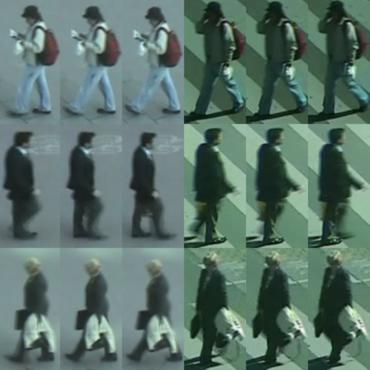Graph Correspondence Transfer for Person Re-identification
In this paper, we propose a graph correspondence transfer (GCT) approach for person re-identification. Unlike existing methods, the GCT model formulates person re-identification as an off-line graph matching and on-line correspondence transferring problem. In specific, during training, the GCT model aims to learn off-line a set of correspondence templates from positive training pairs with various pose-pair configurations via patch-wise graph matching. During testing, for each pair of test samples, we select a few training pairs with the most similar pose-pair configurations as references, and transfer the correspondences of these references to test pair for feature distance calculation. The matching score is derived by aggregating distances from different references. For each probe image, the gallery image with the highest matching score is the re-identifying result. Compared to existing algorithms, our GCT can handle spatial misalignment caused by large variations in view angles and human poses owing to the benefits of patch-wise graph matching. Extensive experiments on five benchmarks including VIPeR, Road, PRID450S, 3DPES and CUHK01 evidence the superior performance of GCT model over other state-of-the-art methods.
PDF Abstract


 VIPeR
VIPeR